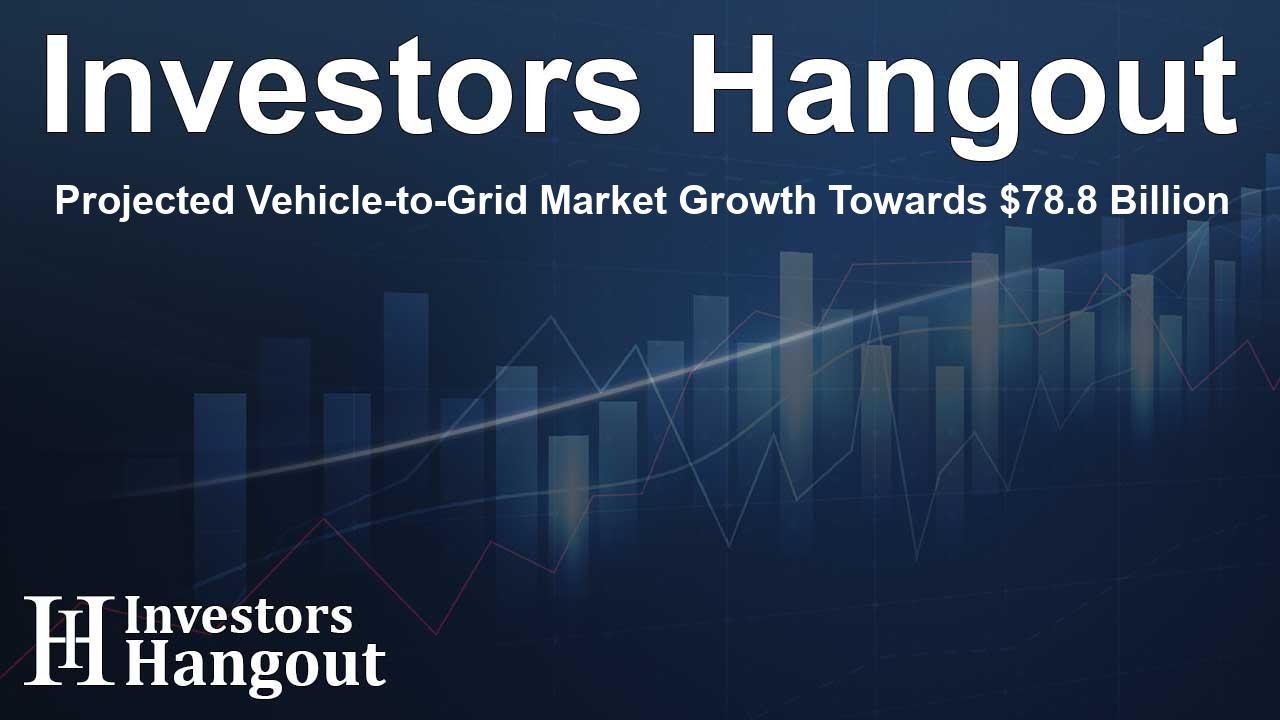Projected Vehicle-to-Grid Market Growth Towards $78.8 Billion

Understanding the Vehicle-to-Grid Market Growth
The global vehicle-to-grid (V2G) market is showing remarkable potential for expansion, projected to move from an initial valuation of USD 5.3 billion in 2024 to an impressive USD 78.8 billion by 2034. This growth encapsulates a remarkable era fueled by the electrification of transportation, where electric vehicles (EVs) are not just seen as modes of transportation but as pivotal elements in the energy landscape.
Market Dynamics and Overview
As we embrace sustainable practices to tackle climate change, the spotlight is firmly on clean energy solutions. The increasing integration of electric vehicles is contributing to a necessary shift. Among the advancements in technology, the vehicle-to-grid systems stand out as they facilitate bidirectional energy flow between the power grid and electric vehicles—turning battery-operated vehicles into vital energy resources.
Government Influence on V2G Adoption
Regulatory entities worldwide are playing a crucial role in encouraging the adoption of V2G technologies. Through incentives such as tax credits, legislative measures, and the encouragement of smart infrastructure, governments are fostering the integration of V2G systems, helping transition towards an eco-friendly energy model. This evolution is vital for reducing overall energy expenses for consumers and grid operators alike.
Transformative Trends in the Market
The V2G ecosystem thrives through collaborative efforts, integrating electric vehicles as distributed energy resources into wider energy management practices. Key trends fueling the market include:
- Expanding Ecosystem: The growth of bi-directional chargers is enhancing the capabilities of smart grids, enabling optimizations in energy flow.
- Innovative Partnerships: Collaborations between utility companies and manufacturers are redefining energy consumption and demand strategies across urban landscapes.
- Technological Advancements: Rapid developments in battery technology, power electronics, and communication systems are heightening the efficiency of V2G solutions.
Challenges and Limitations Facing V2G Integration
While the V2G market is on the rise, challenges remain. Integrating electric vehicles with existing grid infrastructures demands stringent protocols and advanced systems which are not universally available yet. Additionally, consumer hesitance stemming from concerns about battery lifetime and initial costs has limited widespread adoption. Without a comprehensive understanding and infrastructure preparation, the transition could face setbacks.
Future Opportunities in the V2G Sphere
Despite hurdles, the potential for future growth in the V2G market is immense. Continued investment into research and development can lead to significant improvements in technology. The necessary coordination among stakeholders can open doors to innovative solutions aligning environmental goals with economic growth.
Regional Developments in the V2G Market
Regions around the globe exhibit diverse growth patterns. North America, for instance, has emerged as a prominent player, thanks to substantial investments in EV infrastructure and government initiatives promoting smart grid technologies. In contrast, the Asia Pacific region is witnessing rapid growth, driven by regulations aimed at reducing carbon emissions and fostering renewable energy integration.
Asia Pacific Emerges as a Key Player
Countries like India and China are leading the way towards expansive EV fleets, emphasizing renewable energy’s contribution to economic frameworks. As V2G systems gain traction, significant shifts in energy management are anticipated.
The Road Ahead for Vehicle-to-Grid Technology
The overarching landscape of the vehicle-to-grid market continues to evolve, as consumer awareness and demand grow. Adapting to clean energy solutions will require concerted efforts among regulatory bodies, manufacturers, and consumers alike to harness the full potential of V2G technologies. As electric vehicles continue to transform the energy paradigm, the future looks promising for sustainable energy solutions.
Frequently Asked Questions
What is the vehicle-to-grid technology?
Vehicle-to-grid (V2G) technology allows electric vehicles to communicate with the power grid to send energy back to the grid when needed, enhancing overall grid stability.
How will the market grow over the next few years?
The V2G market is projected to grow from USD 5.3 billion to USD 78.8 billion by 2034, driven by electric vehicle adoption and advances in battery technology.
What are the main challenges in adopting V2G technology?
Challenges include limited consumer awareness, concerns over battery life, high initial costs, and insufficient grid infrastructure to support bidirectional energy flow.
Why is government support important for V2G technology?
Government support through incentives and regulations accelerates the integration of V2G technologies into energy strategies, promoting cleaner and more sustainable energy use.
Which regions lead in the V2G market development?
North America and Asia Pacific are leading with strong investments in EV infrastructure and supportive government policies aimed at reducing emissions.
About The Author
Contact Lucas Young privately here. Or send an email with ATTN: Lucas Young as the subject to contact@investorshangout.com.
About Investors Hangout
Investors Hangout is a leading online stock forum for financial discussion and learning, offering a wide range of free tools and resources. It draws in traders of all levels, who exchange market knowledge, investigate trading tactics, and keep an eye on industry developments in real time. Featuring financial articles, stock message boards, quotes, charts, company profiles, and live news updates. Through cooperative learning and a wealth of informational resources, it helps users from novices creating their first portfolios to experts honing their techniques. Join Investors Hangout today: https://investorshangout.com/
The content of this article is based on factual, publicly available information and does not represent legal, financial, or investment advice. Investors Hangout does not offer financial advice, and the author is not a licensed financial advisor. Consult a qualified advisor before making any financial or investment decisions based on this article. This article should not be considered advice to purchase, sell, or hold any securities or other investments. If any of the material provided here is inaccurate, please contact us for corrections.
